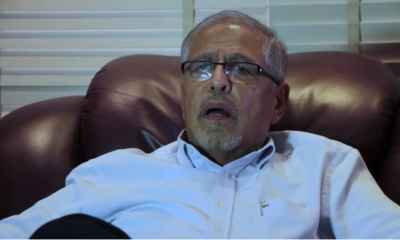Investigations
Corrupt Public Officers: Unexplained Wealth Order

By NLM Writer
The Anti-Corruption and Economic Crimes Act (ACECA) provides circumstances under which a person is required to explain how he or she acquired funds and other assets. This has commonly been referred to as unexplained wealth orders.
The principle of unexplained assets is based on the aspect that a person who has assets that are not in any way comparable to his known legitimate source of income and the fact that he or she cannot not explain satisfactorily the source of the assets. With what you have and own, have you earned it?
When a public official cannot explain his or her asset that may be regarded as unjust enrichment. Article 20 of United Nations Convention Against Corruption (UNCAC) defines illicit enrichment as a “significant increase in the assets of a public official that he or she cannot reasonably explain in relation to his or her lawful income.” UNCAC was signed and ratified by the Republic of Kenya of 9th December 2003.
In Stanley Mombo Amuti v Kenya Anti-Corruption Commission [2019] eKLR (the Amuti’s case) where the Court of Appeal stated that “Entrenched in the Act is the concept of “unexplained assets” which is a legal innovation to combat the vice of “doubtful source of wealth, money laundering and suspicious corrupt practices.” Underlying the concept is the theme “You fail to satisfactorily explain the lawful source of assets, you forfeit it.”
Section 55 of ACECA provides for the basis of forfeiture of unexplained assets. Section 55(2)(a) provides that the Ethics and Anti-Corruption Commission (EACC) may commence proceedings under the section against a person if, after investigation, the Commission is satisfied that the person has unexplained assets. The process envisioned by Section 55 of the Act is regarded as a non-conviction based asset forfeiture.
Section 2(1) of ACECA defines “Unexplained assets” means assets of a person – “(a) acquired at or around the time the person was reasonably suspected of corruption or economic crime; and (b) whose value is disproportionate to his known sources of income at or around that time and for which there is no satisfactory explanation.”
Section 2(1) of ACECA offers a clear threshold in making the determination of what constitutes unexplained assets.
According to a report by EACC for the financial year 2018 – 2019, the Commission recovered public assets amounting to Kshs. 3,187,821,838.80/= during the period under review. The figure included Kshs. 317,000,000/= recovered from Jimmy Kiamba in an unexplained assets.
The main question in unexplained wealth proceedings that court must resolve is what should be believed between mere suspicion and persuasive cogent evidence that property was unlawfully acquired.
The Court of Appeal in the Amuti’s case summarized the threshold for existence of unexplained assets as per Section 2 and 55(2) of ACECA to be “i. There must be set time period for the investigation of a person; ii. The person must be reasonably suspected of corruption or economic crime; iii. The person must have assets whose value is disproportionate to his known sources of income at or around the period of investigation and iv. There is no satisfactory explanation for the disproportionate asset.”
The Commission upon completion of investigations contemplated under Section 55(2)(a) of ACECA it finds that a person has unexplained assets, is required to issue a person under investigations with a statutory notice as per Section 26 of ACECA.
Section 26 of ACECA requires a person to offer an explanation as to how the assets under investigations were acquired. The onus is therefore on the person to clearly explain how he or she acquired the assets.
In Assets Recovery Agency v Pamela Aboo; Ethics & Anti-Corruption Commission (Interested Party) [2018] eKLR Hon. Lady Justice Hedwig I. Ong’udi held that “Where the person against whom allegations have been made does not give a satisfactory explanation to rebut the allegations, it means what has been presented is not challenged.”
According to the Court of Appeal in Amuti’s case stated that Notice under Section 26 is a civil investigatory tool aimed at collecting information and data from a person suspected of corruption or economic crime. The Court further stated that the Notice may issue regardless of when the property was acquired.
One of the critical aspect in dealing with unexplained assets is whether one must be facing criminal charges or proceeding for court to seize or order forfeiture of the property.
Section 55(3) of ACECA provides that proceedings under the Act shall be commenced by Originating Summons and the proceedings are of a civil nature where the standard of proof is on balance of probability. The Commission during the proceedings is not required to prove that there was criminal conduct on the person who is under investigations. Hence in such proceedings, the question of innocence does not arise.
In Amuti’s case the Court of Appeal held that “The concept of “unexplained assets” and its forfeiture under Sections 26 and 55 (2) of ACECA is neither founded on criminal proceedings nor conviction for a criminal offence or economic crime. Sections 26 and 55 of ACECA are non-conviction based civil forfeiture provisions. The Sections are activated as an action in rem against the property itself. The Sections require the Anti- Corruption Commission to prove on balance of probability that an individual has assets disproportionate to his/her legitimately known sources of income. Section 55 (2) of the Act make provision for evidentiary burden which is cast upon the person under investigation to provide satisfactory explanation to establish the legitimate origin of his/her assets. This evidentiary burden is a dynamic burden of proof requiring one who is better able to prove a fact to be the one to prove it…”
The second common criticism against the provision of Section 55 ACECA is that infringes on a person’s right against self-incrimination as enshrined under Article 50(2)(l) of the Constitution. Further, that the Section offends Section 107 of the Evidence Act that provides for burden of proof.
Section 55(2)(b) requires EACC to ensure that a person who is under investigations for unexplained assets to be afforded a reasonable opportunity to explain the disproportion between the assets concerned and his or her known legitimate sources of income. If the Commission is not satisfied with the explanation, it may file proceedings under the section.
In Jimmy Mutuku Kiamba & 3 others v Ethics & Anti-Corruption Commission & 4 others [2018] eKLR Hon. Lady Justice Hedwig I. Ong’udi stated that, “64. Sections 55 and 56 of the ACECA have provision for a person suspected of having corruptly acquired assets to give an explanation. It cannot therefore be said that they are condemned unheard in violation of Article 50 of the Constitution. Once the matter is filed in court, the person is again given an opportunity to present his/her case.”
The third common criticism is that Section 55 of ACECA offends the right to property as enshrined in Article 40. However a clear reading of Article 40 shows that there is a clear rider on the right to property. Article 40(6) provides that the rights under Article 40 do not extend to any property that has been found to have been unlawfully acquired.
The Court of Appeal in the Amuti’s case held that “The right protects the sweat of the brow – it does not protect property acquired through larceny, money laundering or proceeds of crime or any illegal enterprise. When an individual is alleged to have assets disproportionate to his known lawful source of income, is asking such a person to explain and account for the unexplained disproportionate assets a violation of the constitutional protection of the right to property” The answer is in the negative. There is no violation of the right to property if an individual is requested to explain the source of his assets that is disproportionate to his legitimate source of income … Those who acquire property unlawfully cannot claim protection provided by the legal system. It is in this context that Article 40 (6) of the Constitution provides that protection of the right to property does not extend to property that has been unlawfully acquired.”
The Court of Appeal decision in Amuti’s case was challenged at the Supreme Court and it was dismissed the appeal for want of jurisdiction which means that the decision by the Court of Appeal was proper. Hence settling with finality on the law in relation to unexplained assets.
In a Press Statement issued by EACC after the Supreme Court decision, the Commission through the Chief Executive Officer (CEO) Maj. (Rtd) Twalib Mbarak, welcomed the decision terming it as ushering a new dawn in the fight against corruption in Kenya and strengthens jurisprudence on lifestyle audit.
Corruption is a cancer that has affected all of us and one of the ways to deal with it is by utilizing the principle of unexplained wealth order which is a critical tool.
There is no doubt that the Amuti’s Case has set a precedent and a proper basis for dealing with public official who use their position to unjustly enrich themselves. The decision will have a huge positive impact in dealing with corruption matters. The case has in do doubt given fresh impetus to EACC to go after the ill-gotten wealth.
It is clear that one of the greatest weapon in fighting graft is ensuring utilization of Section 55 of ACECA by EACC. Having unexplained assets/wealth may be equated to unjust enrichment. How did a public official whose salary is known acquire the wealth he or she has? Does the wealth exceed his or her known source of income?
The aim of unexplained assets is to ensure the same is recovered and to ensure that those who engage in corrupt activities do not in any way enjoy their illegally gotten wealth. It is not simply a legal question but a moral one, to account for what you have and own.
We should never as Kenyans allow the law to be perverted by unscrupulous individuals to their personal selfish gain. Corruption has millions of countless victims who must and should always have a voice.
It is therefore invigorating to see EACC actively utilizing the various provisions of the law on unexplained assets for the sole purpose of recovering stolen Kenyan wealth. It is with no doubt that Kenyans are looking forward to EACC seizing more assets for the single sake of public good. (
Kenya Insights allows guest blogging, if you want to be published on Kenya’s most authoritative and accurate blog, have an expose, news TIPS, story angles, human interest stories, drop us an email on [email protected] or via Telegram
-

 Investigations2 weeks ago
Investigations2 weeks agoHow Land Grabbing Cartels Have Captured Ardhi House
-

 Business2 weeks ago
Business2 weeks agoPanic As Payless Africa Freezes With Billions of Customers Cash After Costly Jambopay Blunder
-

 News4 days ago
News4 days agoTemporary Reprieve As Mohamed Jaffer Wins Mombasa Land Compensation Despite Losing LPG Monopoly and Bitter Fallout With Johos
-

 Investigations1 week ago
Investigations1 week agoHow SportPesa Outfoxed Paul Ndung’u Of His Stakes With A Wrong Address Letter
-

 News2 weeks ago
News2 weeks agoSCANDAL: Cocoa Luxury Resort Manager Returns to Post After Alleged Sh28 Million Bribe Clears Sexual Harassment and Racism Claims
-

 Investigations4 days ago
Investigations4 days agoFrom Daily Bribes to Billions Frozen: The Jambopay Empire Crumbles as CEO Danson Muchemi’s Scandal-Plagued Past Catches Up
-

 Sports3 days ago
Sports3 days ago1Win Games 2025: Ultimate Overview of Popular Casino, Sports & Live Games
-

 Investigations1 week ago
Investigations1 week agoInside the Deadly CBD Chase That Left Two Suspects Down After Targeting Equity Bank Customer Amid Insider Leak Fears

















